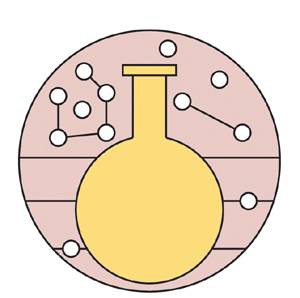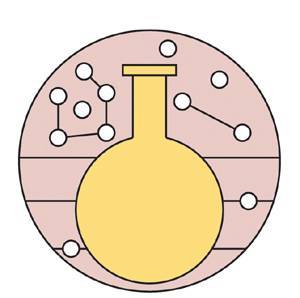This article is a preview from the Summer 2018 edition of New Humanist
Hold up your thumb. A hundred billion neutrinos are flying through your thumbnail every second. Eight and a half minutes ago they were in the heart of the Sun.
Neutrinos are created in prodigious numbers by sunlight-generating nuclear reactions. They were predicted by the Austrian physicist Wolfgang Pauli in 1930. Like many physicists, he was baffled by radioactive beta decay in which the core, or “nucleus”, of an atom spits out an electron, or “beta particle”, to shed excess energy and achieve stability. Since a given nucleus loses a fixed amount of energy in this process, the expectation was that the ejected electrons would always have the same energy. Bafflingly, however, they did not.
Think of a gun, which uses a fixed amount of explosive energy to fire a bullet. Every bullet exits the gun muzzle at the same speed. It never happens that one bullet leaves at moderate speed, the next at high speed, the one after that so slowly it merely dribbles out of the gun barrel. But this is what the tiny electron bullets spat out in beta decay do. Not surprisingly, physicists were shocked.
Enter Pauli. In 1930, he was a having a very bad time. His mother had recently committed suicide and he had just got divorced from his cabaret-dancer wife when she had run off with another man less than a year after they married. He was so devastated he would later ask for counselling from the great psychoanalyst Carl Jung.
Perhaps as a distraction from his personal problems, Pauli tackled the puzzle of beta decay. And, in a letter on 30 December, he proposed his “desperate remedy”. Alongside the electron emitted in the beta decay, perhaps a second particle was also ejected.
Think of the gun again. If, when a bullet emerges from the barrel, it emerges with a second projectile, the two will share the energy. If the second projectile takes very little of the energy, then the bullet will take the lion’s share. If the second projectile takes most of the energy, the bullet will have very little energy. In fact, depending on how much of the available energy is stolen by the second projectile, the bullet could have any of a range of possible energies.
Pauli called his hypothetical particle the “neutron”, though later it would be renamed the “neutrino” by Enrico Fermi. By 1934, Fermi had developed a theory of beta decay which involved a new interaction dubbed the weak force. It was because it is so weak that neutrinos interact so infrequently with matter. Typically, one can pass through trillions of kilometres of lead before being stopped. Pauli bet a case of champagne that his neutrino would never be detected. But he was wrong.
Frederick Reines and Clyde Cowan had spent a decade exploding H-bombs on remote atolls in the Pacific Ocean, an experience that had given them a certain “can-do” spirit. Detecting an impossible-to-detect particle was a challenge that appealed to them. Their first idea was to detect the neutrinos from a nuclear blast with an experiment placed just 50 metres from ground zero. But they were persuaded to try a nuclear reactor instead. They succeeded, on 14 June 1956.
Neutrinos are produced in unimaginable quantities by the Sun and stars. And vast numbers survive from the big bang. By a large factor, neutrinos are the most common particles in the universe. But, since they are ghosts that barely haunt the world of physical reality, you would be forgiven for thinking they are of no consequence. Nothing could be farther from the truth.
These motes of nothingness could be the dark matter that controls the fate of the universe. They could explain why we live in a universe of matter and not antimatter. And, crucially, they cause massive stars to explode as “supernovae”. Although a supernova can shine as bright as a galaxy of 100 billion stars, a mere 1 per cent of its energy is emitted as light; 99 per cent consists of neutrinos. It is neutrinos flooding out of the core of a dying star that blow the exterior envelope of the star into space. The envelope contains elements that enrich interstellar gas clouds, destined to fragment into the new generations of stars. The iron in your blood, the calcium in your bones, the oxygen that fills your lungs each time you take a breath – all were forged inside stars that lived and died before the Earth was born.
Without neutrinos, the elements essential for life would remain forever locked up inside stars. The truth of Pauli’s impossible particle is that it is more critical to the universe than anyone could have imagined. Without it, you would not be reading these words.

